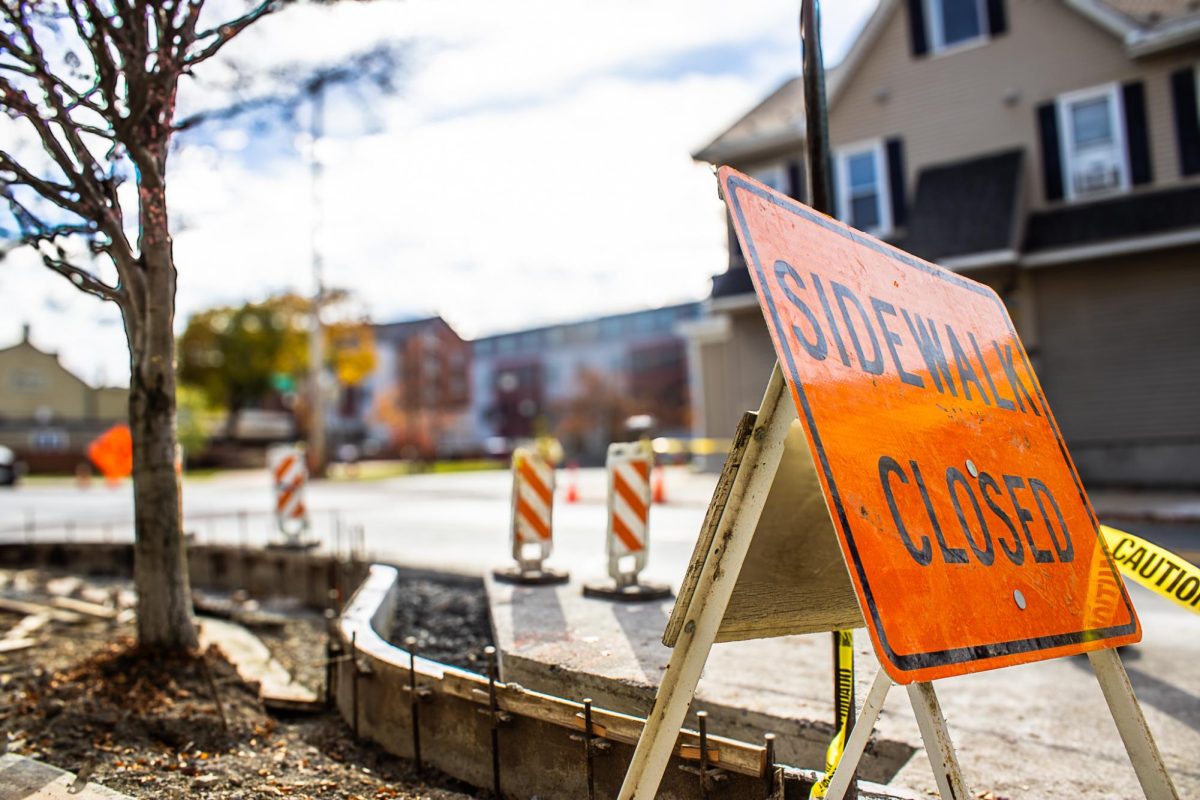The Cattell Street Pedestrian Improvement Project is officially underway. Notorious for being a difficult street to cross, Cattell will be undergoing construction until next spring that is set to install curb bump-outs, marked crosswalks, bicycle racks, benches, pedestrian signals, ADA ramps, light poles, curbs, sidewalks and street trees.
The project is separated into three phases: bumping out curb corners, installing rectangular rapid flashing beacons and increasing lighting.
“[By] bumping the corners out at High Street, March Street and Clinton Terrace … we’re bringing the corners out to where a pedestrian can be seen safely and it’s easier for a driver to see a pedestrian,” Dave Hopkins, director of Easton’s public works department, said. “We can also shorten the crossing distance, so it gets them out of the roadway faster.”
The rectangular beacons with button-activated flashes are already used down the hill to cross between Buck Hall and 248 on the arts campus, and are “known to be really effective in gaining driver compliance,” according to Hopkins. He added they will be installed at High Street, March Street and College Avenue.
However, the logistics of construction have impacted students who live off campus on and near Cattell St. According to Easton’s website, temporary road closures and lane restrictions are the only potential difficulties, but students have reported several inconveniences.
“I’m not an early riser … and they start pretty early,” Kaitlyn McQuaid ‘24, who lives on Cattell St., said. “It’s loud, and I live in the room that’s right next to the street … We do have access issues. We’ve been told by our landlord in the coming weeks … they’re going to switch to the other side, [blocking the only entrance.] So … I’m not exactly sure how we’re going to get into our house.”
Tyler Joseph ‘24, also lives on Cattell St. and has noticed his neighbors’ struggles.
“[We’re] unable to use the sidewalk and have to walk into the street directly into oncoming traffic,” Joseph wrote in an email. “We have neighbors that are elderly, and they struggle getting up and down the street.”
Hopkins explained that it can be difficult to meet ADA standards during the construction of new ramps.
“The contractor is required to allow access at all times … but for these new ADA ramps, the slopes are really important and there’s pretty tight restrictions for the slopes for the landing and surrounding sidewalks,” Hopkins said.
The city outlined a 7 a.m. to 10 p.m. work time, with the three phases on and off until 2025.
“We’ll do our best to get everyone access, but there may be a point in time when they’re inconvenienced,” Hopkins said. “We try to reduce that at much as possible.”























































































































